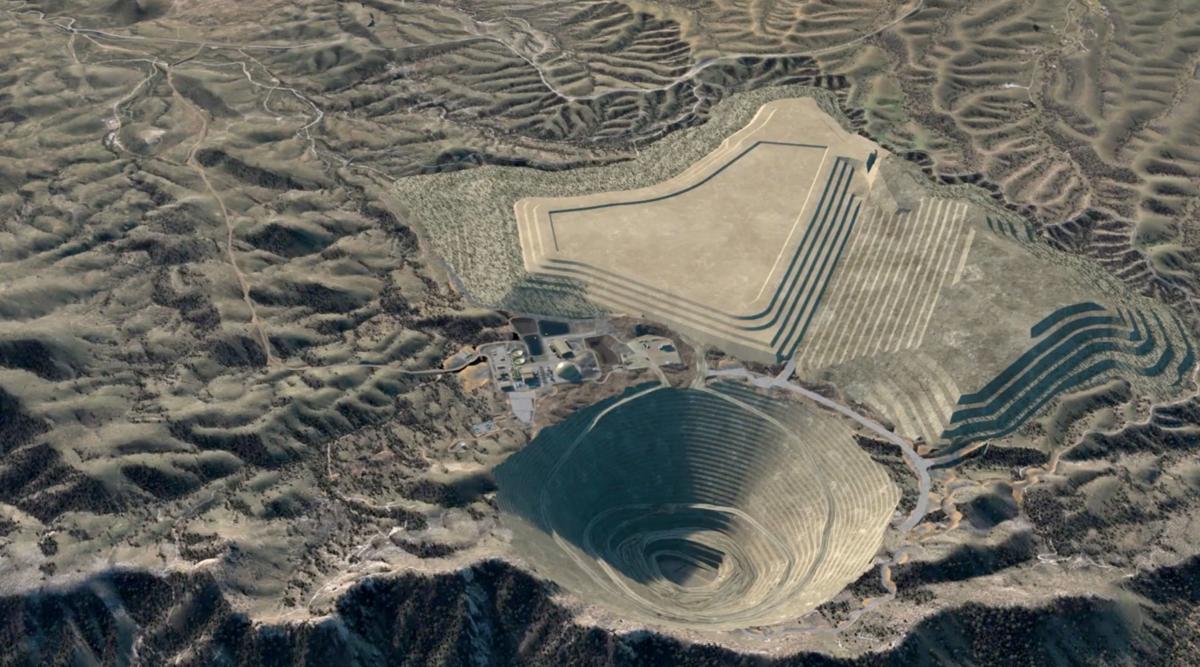Construction of the proposed Rosemont Mine will cause "irreparable harm" to biologically rich areas and culturally sensitive archaeological sites, mine opponents said in seeking a court injunction to block construction of the $1.9 billion project.
Attorneys for three tribes, the group Save the Scenic Santa Ritas, the Center for Biological Diversity and other opponents filed requests for an injunction Wednesday night in U.S. District Court. They have already filed five lawsuits against three federal agencies seeking to overturn the agency approvals of the project. The injunction seeks to stop mine construction until the merits of those lawsuits can be heard and decided.
If the mine can survive these lawsuits, it would become the U.S.' third largest copper mine. It would be built on private and federal land in the Santa Rita Mountains, 30 miles southeast of Tucson. It would result in the clearing of thousands of acres of Sky Island habitat to bring in a project that would employ 500 people at high wages.
The tribes, including the Tohono O'odham Nation, argued in their motion that there's no doubt their interests will suffer immediate and irreparable harm because starting in August, the mining company will begin clearing 36 drilling sites and land for access roads, "scraping away the land adjacent to prehistoric sites and degrading this ancient place of prayer and solitude."
The environmentalists' motion for injunction also cited Hudbay's plans to build new intersections at the mine site and Arizona Highway 83 and a 20-inch diameter water pipeline and a high voltage transmission line from Sahuarita over the Santa Ritas. Later in the fall, Hudbay plans to start significant clearing and grubbing — removal of stumps and roots — of vegetation at the mine site, the injunction motion said.
The opponents quoted Julia Fonseca, a Pima County geologist, as saying the removal of topsoil and other soils for the project will destroy soil structure, that these soil formations are the result of processes taking tens of thousands of years, and that mine reclamation can't replace what's lost. Fonseca is the county's environmental planning manager.
On April 18, Hudbay Minerals Inc. told U.S. District Judge James Soto in court that it wants to start early construction work on the mine in June. But under a court-approved briefing schedule that parties to the case agreed to this week, the soonest construction could now begin, even if the injunction isn't granted, is sometime after July 15.
That's the date when the agencies being sued and Hudbay — which has joined the case as an intervenor siding with the agencies — are due to file their final responses to allegations made by the plaintiffs to support their injunction request.
The agencies being sued are the U.S. Forest Service, Fish and Wildlife Service and the Army Corps of Engineers.
In a statement, Hudbay said, "We will continue to work with the judge, agencies, and plaintiffs in the development of this state-of-the-art modern mine."
The mining company and the agencies have all planned and approved numerous mitigation measures aimed at compensating for the project's damages to the land and vegetation.
Proving irreparable harm is one of four legal standards that opponents must meet to obtain an injunction.
The lawsuits challenge:
- The Fish and Wildlife Service's approval of a final biological opinion for the mine in April 2016.
- The Forest Service's approval of the mine in June 2017.
- The Army Corps' approval of the mine in March 2018.





